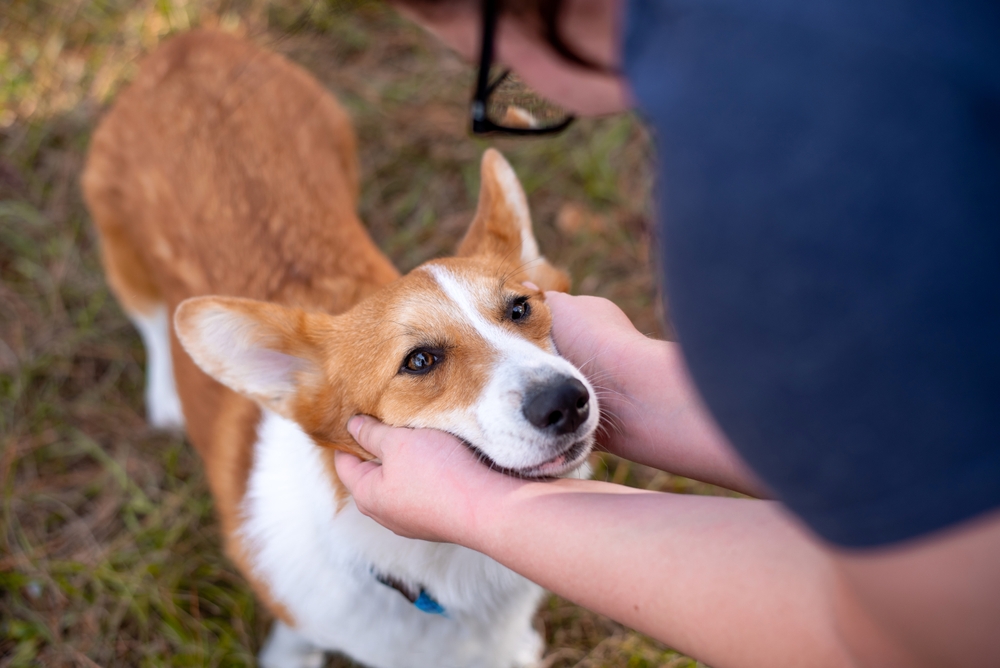In this article
Dogs are intelligent animals with a knack for communicating effectively with humans. While they can’t speak verbally, they can gather information by observing our body language and vocal tones.
Dogs can also learn to identify multiple words. However, it’s a bit of a stretch to say that they can be bilingual, as being bilingual means being able to understand and communicate in two languages fluently. Despite not being able to speak, dogs can understand and memorize words in different languages. They may even be able to tell the difference between two languages, but they can’t be considered truly bilingual.

How Dogs Understand Verbal Languages
Dogs are social animals that are clear communicators and skilled at understanding a social landscape. When it comes to canine communication, dogs mainly use body language and olfactory cues rather than vocal communication. They also don’t use verbal language. So, it’s quite amazing that they can still pick up on and understand some human speech and words.
A 2020 study from Eötvös Loránd University conducted an experiment designed to better understand how dogs process speech and words.1 The study found that dogs are able to distinguish specific words, but their ability to access phonetic details is limited. It’s almost comparable to how infants up to 14 months old process speech. They can pick up on certain words, but their phonetic processing is very basic.
Dogs also seem to have an easier time learning and understanding commands than the names of different objects. For example, your dog is more likely to learn the “sit” command than the name of their favorite toy.
What we know so far is that dogs can identify different words, with the average dog being able to learn about 165 words and signals.2 Of course, there are exceptions to the rule. Some dogs can learn hundreds of words and identify the names of specific objects easily. Due to the breed’s reputation for being the smartest, it’s not a surprise that most of the dogs that possess this advanced linguistic understanding are Border Collies.

Can Dogs Understand Different Languages?
It’s likely that dogs can tell the difference between two different languages. A 2022 study examined dogs’ brain activity when they hear their owners’ native language and compared it to when they hear a foreign language and scrambled speech.3
The head researcher of this study had her own two dogs—Kun Kun and Odín—and 16 other volunteer dogs trained to sit in an MRI machine.4 They listened to an excerpt of “The Little Prince” that was read in Spanish and Hungarian and then a version that was read with scrambled speech.
The study’s brain scans showed that the dogs’ secondary auditory cortex lit up when they heard a familiar and unfamiliar language. The secondary auditory cortex is a region in the brain responsible for higher levels of processing complex sounds. While the secondary auditory cortex lit up for both familiar and unfamiliar languages, the activity patterns for each language were different.
Another interesting finding was that the difference in brain activity for two different languages was greater in older dogs. The reason for this could be that older dogs have more experience and time to familiarize themselves with a specific language.
The overall findings of this study could indicate that dogs can tell the difference between two different languages. Of course, further research needs to be done to provide more conclusive statements about a dog’s ability to understand human language. However, it’s exciting to know that it’s possible for dogs to distinguish different languages and have their own primary one.

Can I Train My Dog to Be Bilingual?
If you live in a bilingual family, it’s possible that your dog is already “bilingual.” Since they can learn many different words, you can train your dog to learn the same command in different languages. They’ll also probably be quick to pick up on all iterations of their favorite things, like food, treats, and fun activities. For example, if you use the English and Spanish words for “treat” interchangeably, your dog can learn that both words mean the same thing.
How Should I Speak to My Dog?
It’s common for owners to speak to their dogs as if they’re human. Even though your dog may not have the capability to process phonetic details, it can still be beneficial to keep speaking to them.
Your dog’s understanding of language goes beyond phonetics. They can read the emotion behind your words and respond accordingly. Since they also communicate through body language, they’ll be looking for any physical cues to help them understand you.
So, when you talk to your dog, try to be more animated and expressive with your vocal tones and body language. Your dog may not understand all the words that you’re saying, but they can gather a lot of information from context clues.
For example, if you want to tell your dog that you love them, speak to them in an affectionate tone, and give them plenty of pets and scratches while doing so. If you want your dog to relax, speak to them in a calm and steady tone, and use slower, relaxed movements. Your dog will get the message and will respond accordingly.


In Conclusion
Even though dogs aren’t technically bilingual, they’re still capable of distinguishing between familiar and unfamiliar languages. They can also learn commands and tricks in different languages. Despite not being able to speak, dogs are still effective communicators that are capable of understanding humans in ways that go well beyond words.
- See also: Can Dogs Learn Sign Language?
Featured Image Credit: Mary Swift, Shutterstock


















